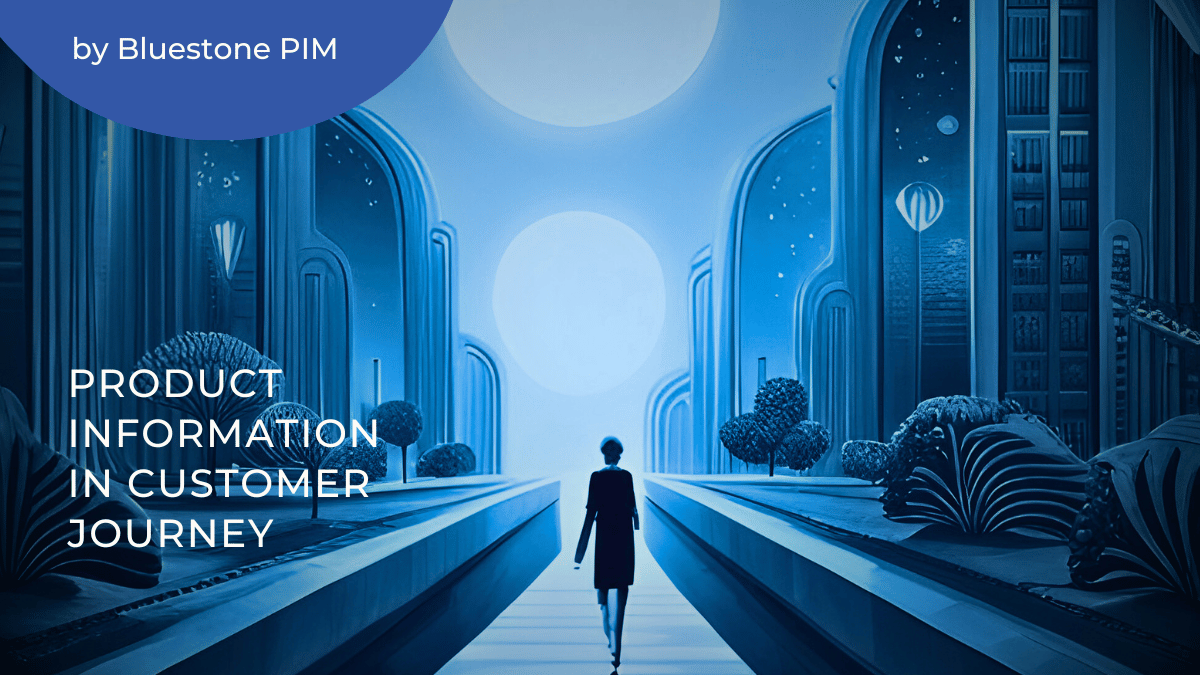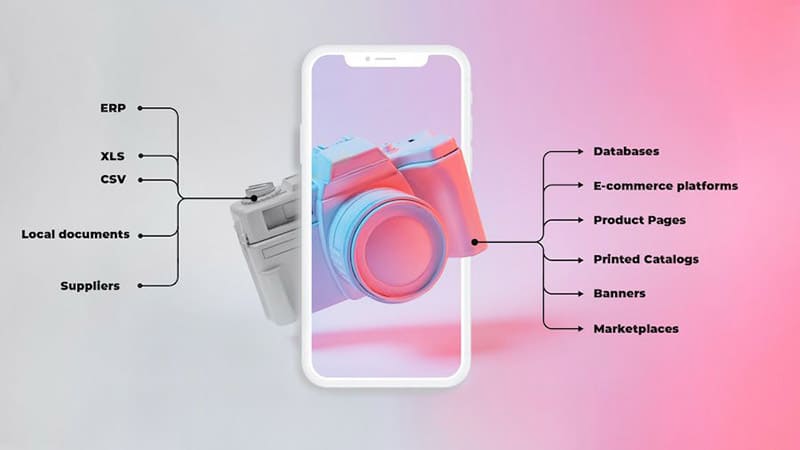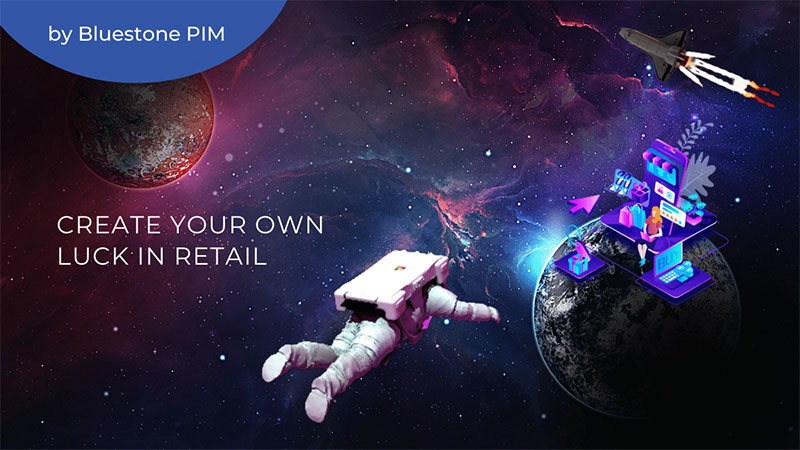Why Product Information is the Backbone of Customer Journey

Table of Contents
- Buyers need guidance
- How does poor-quality product information frustrate customers?
- How does rich product information support customers in their shopping journey?
- How can you enhance the customer journey with complete product information?
- The key role of technology in the customer journey
- Final thoughts
Have you ever wondered why some brands have this irresistible allure that makes them stand out? Is it a victory of great marketing or a matter of a remarkable product?
For me, the truth lies in between.
After all, people waiting in line for hours in front of an Apple store may have been tempted by the brand's brilliant storytelling, but they came primarily for the premiered new model of the iPhone.
On the mission of crafting engaging customer experiences, brands sometimes forget about the essence—the thing customers came for—a product. Yet before they get the product, they absorb a lot of information about it. The product experience is vital to the customer experience because the customer journey doesn't exist without a product.
In this article, I invite you to delve deeper into the purchasing decision process and understand the role of product content at each customer journey stage. This understanding will help make your customer's life easier.
Buyers Need Guidance
Let’s be honest—buying is hard. Making a purchase, especially complex B2B products and services, is a challenging and time-consuming process.
April Dunford, the founder of Ambient Strategy, in her thought-provoking speech How to Build a Product Story that Sells presents a buyer's perspective. She emphasizes that buyers are drowning in information they can't understand and need guidance, not bombing by long lists of features.
Providing complete product information has this crucial purpose: It should help buyers make purchase decisions.
How Does Poor-Quality Product Information Frustrate Customers?
Regarding online shopping, product information plays a crucial role in customers' decision-making process. Shoppers rely heavily on the information they get from product pages to determine whether or not to purchase an item.
But when they see things like:
-
Incomplete or outdated product descriptions without details such as features, attributes, size, weight, and materials
-
Too much information organized messily, with long text without headers and bullet points
-
Lack of customer reviews or ratings
-
Missing product images or low-quality images.
They become confused and frustrated, which could lead to abandoning the cart. The chaotic organization of product information makes customers' research tedious, whereas the lack of social proof can be a signal to them that the product is not worth buying.
Quite often, this moment of shaping the first customer impression on product information lasts only 8 seconds—this is how short the consumer attention span is. So, poor quality of product information can make you lose a potential customer quickly.
How Does Rich Product Information Support Customers in Their Shopping Journey?
#1 It Helps Customers Make Informed Decisions
Giving customers a comprehensive product overview, including features, specifications, and warranties, makes them more likely to make informed decisions that meet their needs. When customers understand your offerings well, the chances of product returns decrease.
#2 It Builds Trust
Customers want to feel confident in their purchases, so providing accurate and up-to-date product information helps you build trust and loyalty. Happy customers will be more likely to recommend your product to others and become brand ambassadors.
#3 It Enhances Customer Experience
Complete product information means you are thinking about your customers' needs, which helps enhance their experiences with your brand. Furthermore, providing detailed product descriptions, high-quality images, and customer reviews can also help to enhance the customer journey further.
#4 It Improves Visibility in Search Engines
Rich product content also helps search engines understand your product better. Proper implementation of keywords in your product descriptions can help your product feature prominently in search results, leading to higher search visibility and more traffic to your website.
#5 It Facilitates Cross-Selling and Upselling
When customers browse one of your products, providing related recommendations can lead them to buy additional products. Including product descriptions and features for relevant accessories or complementary products on the product page make it easy for the customer to add the product to the cart.
How Can You Enhance the Customer Journey with Complete Product Information?
Phase 1: Product Information in a Purchase Decision
Customers rely on product information to understand the product's features, specifications, and benefits, which helps them determine whether it meets their needs and preferences.
Incorporate elements like these on your product pages:
-
Detailed and compelling descriptions,
-
High-quality visuals,
-
Customer reviews,
-
FAQs,
-
Comparison tools.
This way, you can empower customers to make informed choices. When customers feel confident and well-informed, they are more likely to make a purchase, leading to increased customer satisfaction and loyalty. Remember, investing time and effort in providing complete product information is an investment in your customers and your business's long-term success.
Phase 2: The Role of Product Data on Customer Satisfaction and Loyalty
Provide accessible and responsive customer support channels to address post-purchase inquiries or concerns promptly. Whether through live chat, email, or phone support, ensure that your support team is knowledgeable, empathetic, and capable of providing accurate information. Prompt and helpful customer support contributes to customer satisfaction and cultivates loyalty.
Moreover, regularly update and improve your product information to reflect any changes, upgrades, or new features.
Keep customers informed about product enhancements or updates through newsletters, social media, or email campaigns. By actively engaging customers and demonstrating your commitment to product improvement, you strengthen their satisfaction and loyalty.
The Key Role of Technology in the Customer Journey
The empathic mindset is the one. The other is getting the data in one place and managing them successfully. And here, technology steps in because managing and enriching lots of product information is almost impossible when you operate more than 1,000 products.
Product Experience Management (PxM) supports brands, retailers, and merchants in creating a 360-degree product experience based on omnichannel, personalization, and contextualization — all in one strategy to reach modern, savvy consumers throughout their journey.
Final Thoughts
Wrapping up, I have three pieces of advice for you.
-
Start paying attention to high-quality product information, and it will pay off. Effective customer-centric tactics, solidly based on product information, can drive online sales.
-
Think about how you want to use technology to make the customer's life easier and get the message across all touchpoints.
-
If you work in a retail business operating in a multichannel environment and the company's tech stack doesn't include a Product Information Management (PIM) tool, it's a good moment for some introductory readings.
In a multichannel environment, you need a PIM to collect, enrich, and store product information in one place to support any new sales or market channels that might emerge. The ultimate purpose of PIM is to speed up your time to market, improve all aspects of sales, and deliver compelling product experiences across any touchpoint.
To learn more about PIM, read our extensive guide or schedule a personalized demo with a PIM expert.
Good luck!




